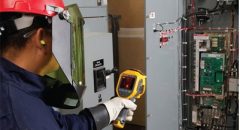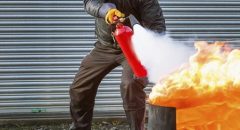Fire & Explosion Risk Assessment
Learn how to identify, assess, and control fire and explosion risks to keep people, assets, and operations safe.
Introduction & Scope of the Assessment
Purpose and Objectives of the Assessment
A Fire & Explosion Risk Assessment (FERA) aims to identify possible fire and explosion hazards, analyze how likely they are to occur, estimate potential consequences, and ensure the right control measures are in place. It helps organizations prevent incidents, protect people, and stay compliant with safety standards.
Applicability: Industries, Facilities, Activities
FERA applies to any facility handling flammable materials—oil and gas plants, chemical manufacturing units, warehouses, paint shops, food processing plants, and even grain storage areas. Wherever fuels, gases, vapors, or combustible dusts are used or stored, this assessment is essential.
Definitions and Key Terminology
- Hazard: A source or situation that could cause harm.
- Risk: The combination of likelihood and consequence.
- Ignition Source: Anything capable of starting a fire or explosion.
- Consequence Modelling: Predicting the potential impact of a hazardous event.
- Tolerability Criteria: The acceptable level of risk for a given operation.
Hazard Identification for Fire and Explosion
Identifying Fuel/Flammable Inventories
The first step is to identify all materials that can burn or explode. This includes flammable gases, liquids, vapors, and combustible dusts. Knowing what fuels exist, where they are stored, and how they are handled is critical.
Identifying Ignition and Energy Sources
Possible ignition sources include hot surfaces, electrical sparks, static discharge, friction, or lightning. Identifying these helps prevent a fire or explosion from starting.
Identifying Oxygen/Oxidant Sources and Accumulation Scenarios
Since oxygen supports combustion, it’s important to recognize areas where oxygen or oxidizing agents could accumulate or mix with flammable materials.
Identifying Confinement, Dust or Vapour Release Scenarios
When vapors or dust are released into confined or poorly ventilated areas, the risk of explosion increases. Identifying these conditions helps in designing better ventilation and control systems.
Scenario Development & Consequence Assessment
Potential Release Types (Jet Fire, Pool Fire, Flash Fire, Explosion)
Different types of fires and explosions can occur depending on how materials are released—such as jet fires from pressurized leaks, pool fires from liquid spills, flash fires from vapor clouds, or explosions in enclosed areas.
Estimating Event Frequencies and Initiating Studies
Assessing how often a fire or explosion might occur helps prioritize control measures. Techniques like frequency analysis and historical data review are used to understand event likelihoods.
Consequence Modelling: Fire Radiation, Over-Pressure, Escalation Effects
By modelling fire radiation, explosion overpressure, and domino effects, organizations can predict how far damage could spread and what assets or people might be affected.
Defining Hazard Zones and Vulnerable Assets/Personnel
Based on the scenarios, hazard zones are mapped to show high-risk areas. This helps in planning safe layouts, exclusion zones, and emergency procedures.
Risk Analysis & Risk Evaluation
Qualitative vs Quantitative Methods
Risk can be analyzed qualitatively (using a risk matrix) or quantitatively (with numerical calculations). Both methods help determine whether risk levels are acceptable or need further controls.
Acceptance Criteria and Tolerability of Risk
Every organization should define acceptable risk levels—typically aiming to reduce risk to “As Low As Reasonably Practicable” (ALARP).
Ranking and Prioritising Risk Scenarios
Risks are ranked by their potential severity and likelihood, ensuring that the most serious threats are managed first.
Control Measures—Prevention, Detection & Mitigation
Prevention Strategies: Inherent Safe Design, Layout, Inventory Reduction
Preventing incidents starts with good design—separating ignition sources, reducing flammable inventories, maintaining safe spacing, and implementing inherently safer design principles.
Detection & Protection Systems: Alarms, Suppression, Venting
Early detection systems such as gas detectors, heat sensors, and alarms can trigger automatic shutdowns or suppression systems to stop fires or explosions from escalating.
Mitigation Measures: Fire Barriers, Explosion Protection, Emergency Response
When prevention fails, mitigation measures limit the damage. Firewalls, blast walls, explosion vents, and emergency response systems all play vital roles in reducing impact.
Layers of Protection and Escalation Control
Multiple independent protection layers—such as alarms, automatic shutdowns, and emergency barriers—create redundancy so that one failure doesn’t lead to disaster.
Emergency Response & Recovery Planning
Emergency Preparedness: Procedures, Drills, Roles and Responsibilities
Emergency preparedness involves defining response steps, assigning roles, and conducting regular drills to ensure everyone knows what to do in an emergency.
Evacuation, Rescue and Escape Routes
Clear, well-marked escape routes and rescue plans ensure quick, safe evacuation. Routes must be inspected and maintained regularly.
Business Continuity and Post-Event Recovery
After an incident, recovery planning ensures minimal disruption—covering damage assessment, repair, restart procedures, and post-incident learning.
Regulatory, Standards & Compliance Requirements
Relevant Regulations and Directives
Compliance with safety regulations is mandatory. Standards like DSEAR, ATEX, and NFPA outline requirements for handling explosive atmospheres and combustible dusts.
Industry Standards and Guidance
Industry-specific guidelines (such as FERA methodologies) provide structured approaches for identifying and controlling fire and explosion risks.
Documentation and Audit Trail Requirements
Maintaining clear documentation—including assessment reports, updates, and audit trails—proves compliance and supports continuous safety improvement.
Implementation, Monitoring & Review
Assigning Responsibilities and Training
Appoint trained personnel to oversee assessments, controls, and emergency systems. Continuous education ensures staff remain competent in fire and explosion safety.
Performance Indicators and Monitoring of Controls
Track safety performance through measurable indicators such as system reliability, incident frequency, and maintenance records.
Periodic Review and Continuous Improvement
Regular reviews ensure that assessments stay current with process changes, new technologies, and lessons learned from incidents.
Fire & Explosion Risk Assessment Best Practices
Benchmarking Industry Best Practices
Use structured methods like HAZID, HAZOP, and QRA, and compare your facility’s performance with industry leaders to ensure robust safety practices.
Common Pitfalls and How to Avoid Them
Avoid errors such as underestimating ignition sources, neglecting dust hazards, skipping documentation, or failing to review assessments. Engaging multidisciplinary teams helps prevent these issues.
Summary & Next Steps
Key Takeaways
- FERA is vital for identifying and controlling fire and explosion hazards.
- Detailed scenario analysis helps predict and manage consequences.
- Prevention, detection, and mitigation work together for effective protection.
- Ongoing monitoring and regular updates keep the system reliable.
Action Plan Template for Organisations
- Build a multidisciplinary safety team.
- Identify all flammable materials, ignition sources, and oxygen supplies.
- Develop scenarios, model outcomes, and map hazard zones.
- Assess and prioritize risks using defined acceptance criteria.
- Implement preventive and protective controls.
- Train staff, maintain documentation, and monitor results.
- Review and improve the system regularly.
Further Resources and Tools
- Fire & explosion modelling tools and software
- Industry-specific guidelines and training programs
- Professional HSE consultancy services
Call to Action
Need expert help with your fire and explosion risk assessment?
Aura Safety Risk Consultant provides end-to-end HSE management and engineering consultancy solutions—ensuring workplace safety, legal compliance, and sustainable industrial growth.
Contact Number:
+91 99994 02106
Get free a quote
Submit your Details
+91 99994 02106
What we offer
Our Services
Identify, evaluate, and control process hazards with expert risk assessments, ensuring safe, reliable, and compliant industrial operations.

Identify, evaluate, and control process hazards with expert risk assessments, ensuring safe, reliable, and compliant industrial operations.

Implement site safety plans, audits, and training to prevent accidents, ensuring safer construction environments and regulatory compliance.

Design, engineer, and audit fire protection systems ensuring reliable performance, asset safety, and adherence to national safety standards.

Empowering workforce with certified HSE, fire, and industrial safety training programs for skill development and regulatory competence.

Create immersive, interactive VR safety training modules for realistic learning experiences in hazard recognition and emergency preparedness.
How it works
Industry Consultation
Project Scoping & Industry Brief
Service Selection
Site Visit & Inspection
Audit & Analysis
Report Submission & Discussion
Frequently Ask Question
A standard fire assessment focuses on fire hazards, while a FERA includes both fire and explosion risks, covering vapour cloud and dust explosion scenarios.
It should be updated after any process change, significant modification, or incident, and reviewed periodically to ensure continued effectiveness.
Hazard zones define the areas likely to experience fire or explosion effects. They guide safety distances and emergency planning.
Deliverables include a comprehensive report with system assessments, gap analysis, risk ratings, recommendations, and a prioritized action plan.
Chemical plants, refineries, oil & gas facilities, paint manufacturers, and food processing plants that handle combustible dusts or vapours.
They are independent systems designed to prevent or reduce incident impact — for example, detection systems, shutdown mechanisms, and containment barriers.
Yes, even small facilities can apply the same principles. The process can be simplified but still provides valuable protection and compliance assurance.
